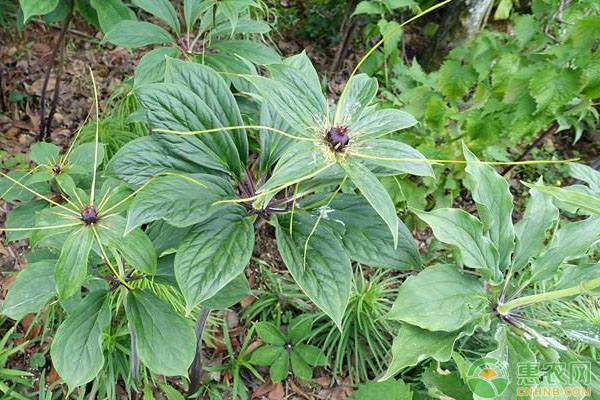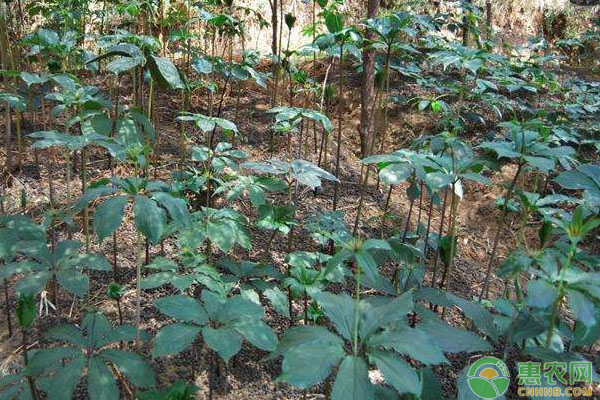Heavy building is one of the common Chinese herbal medicines in China. Due to various reasons, the Chinese herbal medicines in the heavy building are still in short supply. Therefore, it is particularly important to explore the ecologically suitable distribution area of ​​the heavy building and the area suitable for planting heavy buildings. To specifically talk about the medicinal resources, ecologically suitable distribution areas and suitable planting areas of the heavy building, I hope this article will give you a certain understanding of the heavy building.

(1) Ecological characteristics
The heavy building is warm and humid, resistant to yin but afraid of frost and direct sunlight. It requires high air humidity and concealment throughout the growth process, so it grows well in areas where rainfall is concentrated. The ecological characteristics of the heavy building are 1600 ~ 3100m above sea level; the annual average temperature is 10 ~ 20 °C, the frost-free period is more than 240 days; the annual rainfall is 850 ~ 1200mm.
1. soil
The growth of heavy buildings requires relatively high soil requirements. It requires deep or loose soil, high-organic or high-acidity sandy or loam, and it is also required to have a flat terrain and convenient drainage and irrigation. Trace elements such as magnesium, zinc, molybdenum and calcium can be artificially sprayed on the land lacking trace elements such as magnesium, zinc, molybdenum and calcium.

2. Moisture
The heavy building is cool, damp, and moderately watery. Drought and stagnant water are not conducive to the growth of heavy buildings. The rainfall in the planting area is required to be concentrated between June and September. The air humidity is above 75%, and the light is sufficient and the humidity is high.
3. temperature
The plant in the heavy building is more cold-tolerant, but it requires no freezing damage at low temperature. The temperature will not cause freezing damage when the temperature is 1-2 degrees. The suitable temperature for seed germination, root growth and germination of the top bud is 18-20 degrees, and the emergence temperature is 20 degrees. The growth of the plants is 16-20 degrees, and the growth of the roots of the shoots is 14-18 degrees. Generally, the areas with rich heat are more conducive to the growth of the heavy building.
4. illumination
Heavy buildings are inclined or astigmatism, but they are not allowed to illuminate directly. When growing, they require a shaded environment. If the light is strong, the leaves of the heavy building will be withered. Therefore, it is necessary to reduce the shading and increase the light for 2 years before maturity, which is beneficial to secondary metabolism. The accumulation of matter and dry matter. The shadow shade required to be built when planting a heavy building is between 60% and 70%, and the scattered light can effectively promote the growth of the heavy building.

(2) Ecologically suitable distribution areas and suitable planting areas
At present, according to the natural distribution of medicinal materials, the seven-leaf and one-flowers are mainly distributed in the Sichuan Basin, the middle and lower reaches of the Yangtze River and the area south of the Yangtze River. The Yunnan Heavy Building has now contracted in Yunnan, western Guizhou, southeastern Tibet, and Sichuan Panzhihua and Miyi. The area that borders Yunnan. Through field investigation and ecological data analysis, the optimal range of ecological factor values ​​in the concentrated distribution area of ​​Yunnan Heavy Building is as follows: the optimum temperature range in January is 7.0~12.0°C; the lowest temperature is >1.4°C; the optimum temperature range in July is 19.4~ 23.2 ° C, the highest temperature <28.1 ° C; the average temperature range is 21.1 ~ 25.3 ° C, the relative humidity optimum range is 72.4% ~ 80.2%; the annual precipitation optimum range 1134.8 ~ 1293.5mm; the average annual sunshine hours optimum range 2195.6- 2610.1 hours; the soil is mainly composed of yellow soil, purple soil, plateau red soil and other soils. The heavy building has strong requirements for annual precipitation, humidity, July highest temperature, July average temperature, annual average temperature and sunshine variation coefficient. , humidity is the most important limiting factor for the growth distribution of Yunnan heavy buildings.
In summary, it is recommended to include the Hengduan Mountains, the Ailao Mountains, and the Yunnan-Guizhou Plateau (including the Liangsha River in Sichuan, the Yalong River, the Lancang River along the Lancang River, the Northwest Plateau, the Middle South, and the Northeast). Most of Yunnan, such as Qin, Shangri-La, Yuanjiang, Yuanmou, etc.; Leibo and Huili in southern Sichuan; Bijie, Dafang and Sandu in Guizhou are the key planting areas in Yunnan. In the south of Sichuan and the basin of Zhoushan, the southwestern part of Wuling Mountain, the Daba Mountain Range, the south of the Qinling Mountains and the southwest of Funiu Mountain, the northwest of Hubei Province and the southwest of Dabie Mountain and the Tianmu Mountain of Zhejiang Province, as a potential suitable distribution area of ​​Yunnan Heavy Building, moderate exploration and development.
bonito,australian bonito,smoked bonito,leaping bonito,black bonito
Zhoushan Boda Aquatic Products Co.,Ltd , https://www.baida-aquatic.com